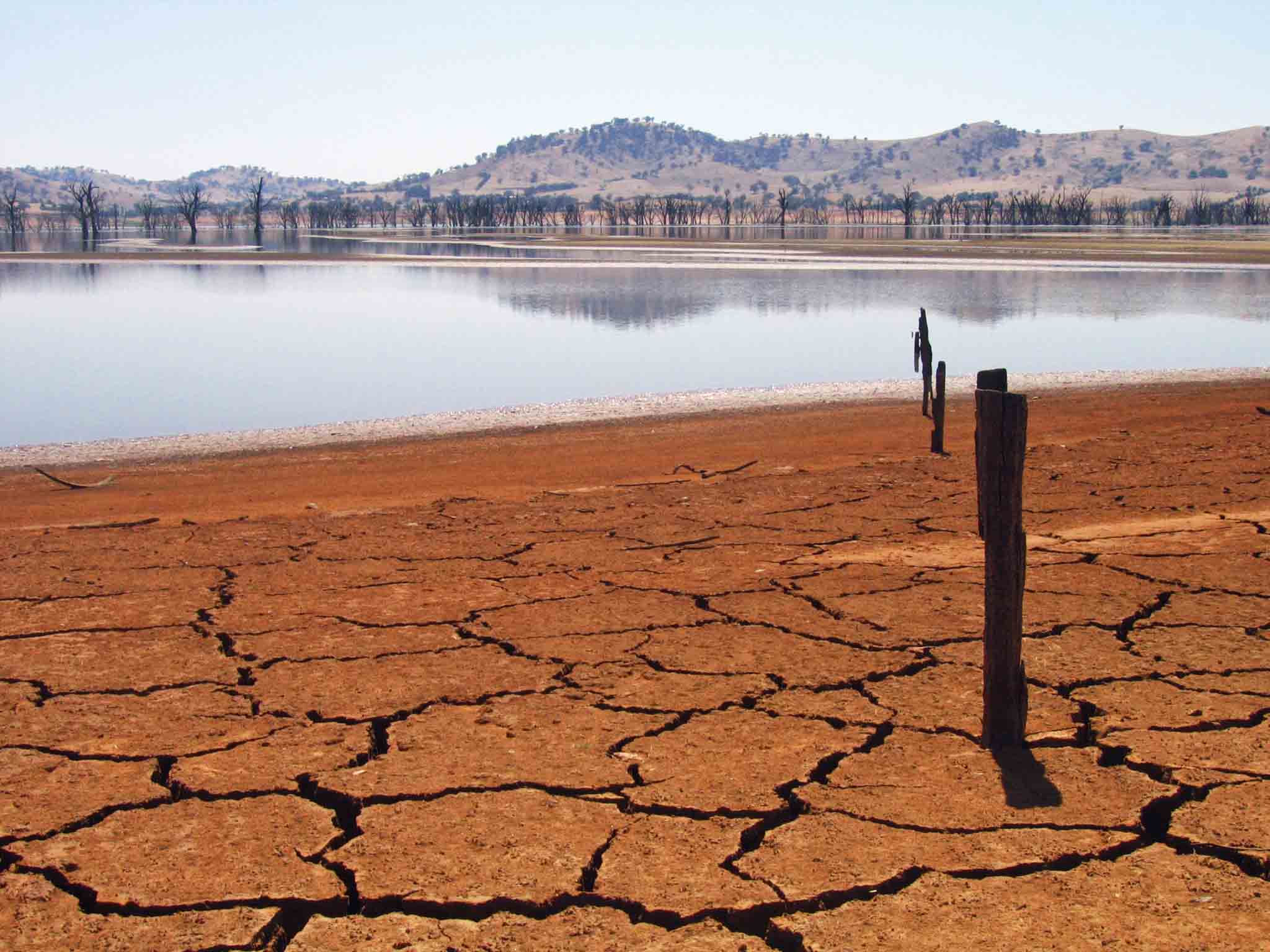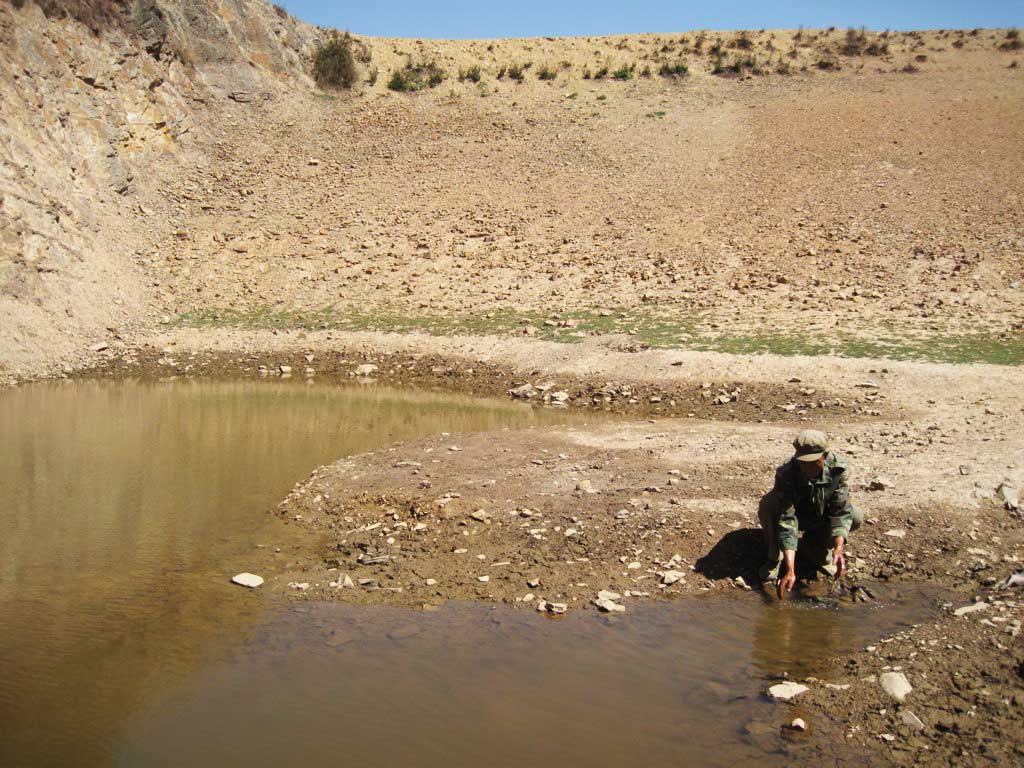California’s drought has entered its fourth year, and for the first time ever, the state’s governor has imposed mandatory water restrictions to cope. The effects of the drought are near legion: Sour water in the Bay Area; >moratoria on building new swimming pools; higher prices for fruit, vegetables, dairy and wine. So how did the Golden State get into this desiccated state?
A drought doesn’t happen overnight; it usually follows an extended time of lower-than-average precipitation. California also has a big Achilles heel when it comes to water: the Sierra Nevada, the snow-collecting mountains that that supply much of the state’s water as it melts. But a lack of precipitation combined with an unusually warm 2013-2014 winter meant that the Sierra Nevada snowpack had very little in the way of liquid assets to draw on.
So what caused the extended period of dryness? Satellite data from recent years shows that atmospheric water vapor that normally passed over California was instead shunted either far north or far south of the state—probably due to an area of high atmospheric pressure, called a “ridge,” that was parked off the U.S. West Coast for an extended period of time. Some scientists think that global warming may make these ridges more commonplace and longer-lasting due to a breakdown of the temperature gradient between the equator and the North Pole, but this hypothesis still isn’t conclusively proven.
It’s unclear when the current drought will abate, and dry seasons like the current one may become less of an outlier in the near future. A recent paper published in the Proceedings of the National Academy of Sciences analyzed drought data for California over more than a century, and concluded that human-driven climate change has increased the probability that drought conditions will crop up in the state.
California’s latest dry spell is hardly the only drought in recent memory that’s resulted from the potent combination of climate conditions and human actions.
Impact: This decade-long drought (actually made up of around four separate, back-to-back droughts) devastated the American heartland, driving millions out of the region in search of jobs. (John Steinbeck captured this migration in The Grapes of Wrath: “On the highways the people moved like ants and searched for work, for food. And the anger began to ferment.”) Huge dust storms that coincided with the drought exacerbated the devastation. On April 13, 1935, a day subsequently referred to as “Black Sunday,” “a mountain of blackness swept across the High Plains and instantly turned a warm, sunny afternoon into a horrible blackness that was darker than the darkest night.” Woody Guthrie sang of these days in songs like “Dust Bowl Blues.” (“I’ve seen the dust so black that I couldn’t see a thing,/And the wind so cold, boy, it nearly cut your water off.”)
Causes: In 2004, NASA scientists used a computer model based on satellite climate data to try to look back at the conditions that led to this disaster. They found that temperature shifts at the surface of the sea—a warmer-than-usual Atlantic and a cooler-than-normal Pacific—had created a change in weather patterns that made less moisture from the Gulf of Mexico available to fuel the rainstorms that would have ordinarily watered the Great Plains.
The drought was exacerbated by the wholesale disappearance of native prairie grasses, which were better at tolerating water stress than the crops, mainly wheat, that had been planted throughout the Midwest. When the wheat dried up, the bare soil was exposed to winds that whipped up the huge dust storms that roiled across the plains.
 Image Credit: Wiki CC/Tim J Keegan
Image Credit: Wiki CC/Tim J Keegan
Impact: Also called “the big dry,” this extended drought was the worst on record in the land down under since 1900, and led to extensive crop failures, bush fires, and dust storms.
Causes: Drought is a recurring feature in Australia, which has an average yearly rainfall below 23.6 inches across 80 percent of its land—the second-driest continent after Antarctica. The Millennium Drought stemmed from a long period of low rainfall due to atmospheric conditions, most likely the warm sea surface temperatures driven by the El Niño Southern Oscillation and an uptick in intensity in an atmospheric phenomenon called the subtropical ridge, which some researchers have linked to climate change [PDF].
Impact: The widespread food crisis following this drought in Somalia, Kenya, Djibouti, and Ethiopia stretched into neighboring countries Uganda, Sudan, and South Sudan. More than 10 million people needed aid thanks to the drought, called the worst in the region in 60 years.
Causes: Rains failed in the region due in part to a strong La Niña event, where warmer water in the Eastern Pacific ocean tend to create more intense rains in Australia, Indonesia, and the Philippines while pulling moisture away from East Africa.
 Image Credit: Wiki CC/Bert van Dijk
Image Credit: Wiki CC/Bert van Dijk
Impact: China’s 2010-2011 drought stood out for its devastating impact on agriculture and power (coal plants in particular require lots of water to keep running).
Some analysts have also connected this drought to the 2011 regime change in Egypt. It started when China started buying up wheat to shore up its resources, sending prices soaring worldwide. That was bad news for Egypt, which is the biggest wheat importer in the world. Thanks indirectly to that drought, bread prices in Egypt fueled dissatisfaction that led to one of the major revolutions of the Arab spring, Oxford University researcher Troy Sternberg wrote.
Causes: Parts of China went more than four months without any significant rainfall, starving vast swaths of farmland. The country is rich in water, but more so in its southern regions; northern China is incredibly vulnerable to water crises. Climate change may also be a factor, as extreme weather events are expected to occur with more frequency as winters get warmer.
Image: Wiki CC / Adam Rifkin
Comments